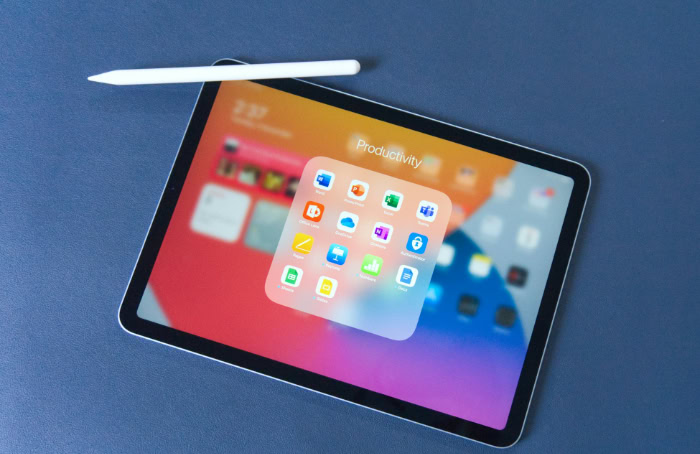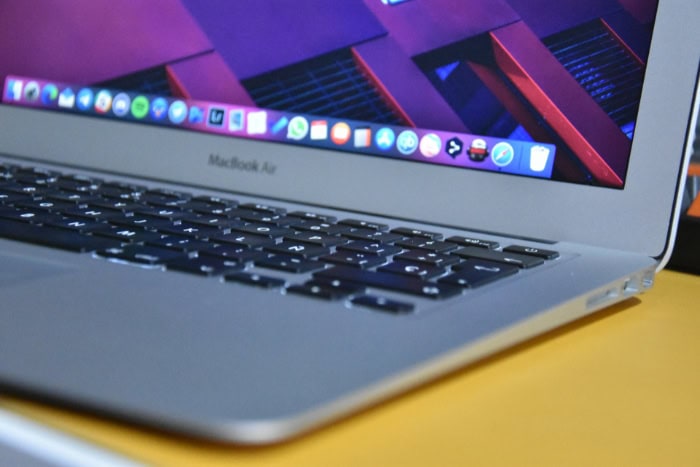Laptop vs. Tablet: How to Pick Your Ideal Option

Finding the perfect device to match your lifestyle can be tricky, especially as laptops and tablets continue to evolve, often overlapping in features. Some people swear by the raw power of a laptop, while others prefer the portability and simplicity of a tablet.
Each has its strengths, but the real question is: which one fits your needs best?
Performance and Hardware Capabilities
Choosing between a laptop and a tablet often depends on the level of performance and hardware capabilities you need. While both devices have come a long way in terms of functionality, their underlying hardware sets them apart in terms of processing power, storage, and multitasking.
Processing Power
Laptops are known for their robust processing capabilities. Equipped with powerful CPUs and GPUs, they excel at multitasking, running resource-heavy software, and even gaming.
Tasks such as video editing, graphic design, or coding rely heavily on processing power, and laptops are designed to handle these demands seamlessly. The ability to run full desktop operating systems enhances their functionality, catering to professionals and gamers who require speed and efficiency.
Tablets, on the other hand, are optimized for efficiency rather than raw power. Their processors are generally designed with low energy consumption in mind, making them ideal for light tasks such as browsing the web, streaming videos, or checking emails.
While high-end tablets are closing the gap with features like powerful chipsets, they still fall short when it comes to handling intensive workflows. If you need raw computing power, a laptop remains the better choice.
However, for casual everyday tasks, a tablet can perform adequately while maintaining portability.
Storage and RAM
Storage and RAM are crucial factors in determining how a device handles tasks and stores data. Laptops typically offer higher RAM and expandable storage options, which makes them a reliable choice for users who manage large files or run several applications simultaneously.
Whether you’re dealing with massive documents, high-resolution videos, or advanced software, the flexibility of a laptop’s memory setup provides the space and speed you need.
Tablets, in contrast, tend to have fixed internal storage, usually ranging from 32GB to 1TB, with many relying on cloud-based storage to compensate for their limitations. While this approach works well for media consumption or basic tasks, it might not be sufficient for users requiring extensive local storage.
RAM on tablets is also generally lower than on laptops, which directly impacts multitasking capabilities. As a result, tablets are better suited for those who prioritize simplicity over heavy workloads.
Multitasking
Laptops are far superior when it comes to multitasking. They support complex workflows, allowing users to open multiple applications, switch between them effortlessly, and even utilize split-screen modes on large screens.
The presence of a desktop operating system adds to their advantage by enabling efficient navigation, organization, and execution of tasks.
Tablets, while capable of handling basic multitasking in mobile operating systems, struggle when users need to perform more demanding tasks. Although newer models offer split-screen functionalities and app switching, the experience can feel limited compared to a laptop.
If heavy multitasking is a regular part of your routine, such as working with multiple browser tabs, spreadsheets, and editing tools, a laptop provides the flexibility and functionality you need. Tablets, however, are more than adequate for occasional multitasking, particularly for casual or entertainment-oriented tasks.
Portability and Design

Portability and design play an essential role in choosing between a laptop and a tablet, especially for users who are constantly on the move or prefer sleek, practical devices. While laptops and tablets cater to different portability needs and durability standards, their design features can greatly impact convenience during travel, day-to-day use, or extended productivity sessions.
Weight and Size
Weight and size are defining factors in the portability of laptops and tablets. Tablets are designed for mobility, typically weighing between 0.5 to 1.5 pounds and featuring compact dimensions that allow them to fit comfortably in bags, backpacks, or even larger pockets.
Their slim profiles make them ideal for travel, commuting, or casual use, providing an effortless way to carry your device wherever you go.
Laptops, on the other hand, prioritize screen size and power over portability. They range in weight from around 2.5 to 6 pounds, depending on the model and specifications, and usually feature screens between 13 and 17 inches.
While bulkier than tablets, laptops offer an advantage with their larger displays, which make them better suited for productivity tasks like writing, working on spreadsheets, or editing videos. For users who value portability above all, tablets are the lighter option, but for those who need more screen real estate, laptops strike a balance between size and functionality.
Build Quality and Durability
The materials and build quality of laptops and tablets influence their longevity and resistance to physical damage. Tablets often feature sleek, minimalist designs with glass covers that prioritize aesthetic appeal and weight reduction.
This makes them visually appealing but more susceptible to screen damage if dropped or improperly handled. Protective cases can mitigate this risk, but the overall durability tends to favor careful use.
Laptops, with their solid frames, sturdy hinges, and built-in keyboards, are built to endure more handling and wear. Their designs can withstand heavier impacts and sometimes offer reinforced materials to protect internal components.
While laptops may not match the elegance of tablets, their durability makes them a better choice for users who need devices capable of surviving the occasional bump or accidental drop.
Battery Life
Battery life is another area where laptops and tablets differ, often depending on the intensity of use and power demands. Tablets are engineered for extended casual use, commonly providing battery durations of 8 to 12 hours on a single charge.
Their energy-efficient components, such as smaller screens and processors, help maximize battery performance, which is particularly useful for entertainment, web browsing, or reading throughout the day.
Laptops, by contrast, offer variable battery life that typically ranges from 5 to 10 hours depending on the model, processor type, and usage. Power-hungry tasks like gaming, video editing, or running multiple applications can significantly reduce battery longevity, making laptops more dependent on chargers for extended sessions.
While laptops provide more functionality, tablets excel at preserving battery life for uninterrupted use during long travel or downtime. The choice often depends on how you intend to use the device and how important extended battery performance is to your lifestyle.
Input Methods and User Experience

The way a device interacts with its user is a crucial aspect of its design. Laptops and tablets offer vastly different input methods, display experiences, and levels of software compatibility.
These differences significantly influence how users engage with tasks, from typing and navigation to working with specialized programs.
Keyboard vs. Touchscreen
Typing and navigation are approached differently on laptops and tablets, shaping how users interact with each device. Laptops come equipped with built-in keyboards, offering an intuitive typing experience suited for long hours of work, such as writing reports, coding, or taking notes.
Their keyboards are tactile and efficient, increasing productivity when precision and speed are priorities. Built-in trackpads or external mice also enhance navigation and control, especially for tasks that require fine adjustments.
Tablets, in contrast, prioritize a touch-first user interface. Swiping, tapping, and gestures dominate interaction, making tablets highly intuitive for casual browsing, reading, and media consumption.
While on-screen keyboards are adequate for short messages or emails, typing lengthy documents can feel awkward. Many tablets support optional keyboard accessories, but these add to the overall cost and lack the integrated feel of a laptop keyboard.
Users who need efficient text input and precise navigation often find laptops more practical, while tablets fit better for quick interactions.
Display Quality
The screen quality of laptops and tablets differs in ways that align with their primary functions. Tablets typically feature higher pixel densities, making their screens perfect for activities like watching movies, viewing photographs, or browsing the web.
The vivid displays on tablets are engineered for media consumption, bringing images and videos to life with enhanced sharpness and brightness. This makes tablets an excellent choice for users who enjoy immersive visual experiences.
Laptops, while not always matching the pixel density of tablets, make up for it with larger screen sizes that improve productivity. Bigger displays allow for multitasking, more detailed work, and precision during creative and technical tasks like graphics design, video editing, or programming.
Some high-end laptops also feature advanced panels such as OLED or 4K displays, which strike a balance between screen size and quality. The choice ultimately depends on whether the focus is on entertainment or professional tasks requiring a larger workspace.
Software Compatibility
The ability to run software effectively is another area where laptops and tablets diverge. Laptops excel in this regard, providing compatibility with full desktop applications such as the Adobe Creative Suite, professional programming tools, and other resource-intensive software.
Their desktop operating systems are built for versatility, enabling users to install and run a wide range of programs tailored to various needs. Professionals in fields like design, engineering, and business often prefer laptops for this reason.
Tablets, while offering an ever-growing library of apps, are limited by mobile operating systems. Apps on tablets are designed for simplicity and ease of use rather than depth.
For casual tasks such as photo editing, note-taking, or basic file management, tablets can be effective, but they lack the power and professional-grade features of desktop applications. For anyone relying on advanced software or seeking maximum compatibility across programs, laptops remain the better choice.
However, tablets shine for users who prioritize convenience and a straightforward interface.
Budget and Use Case Alignment

Budget considerations and how the device aligns with your needs are critical factors when choosing between a laptop and a tablet. Each device caters to different price ranges and usage scenarios, making it important to evaluate what fits your financial situation and day-to-day requirements.
Price Ranges
The cost of laptops and tablets varies widely depending on the specifications and brand, giving users plenty of options within their budget. Tablets generally start at a lower price point, with entry-level models costing around $200.
These are perfect for basic tasks like browsing and streaming. Premium tablets, such as high-end iPads or Android tablets, can reach prices as high as $1,500.
These models rival mid-tier laptops in terms of performance, offering advanced features like powerful chipsets, larger storage, and quality displays.
Laptops, on the other hand, provide greater configurability, which accounts for their broader price range. Budget-friendly laptops start around $300, catering to users who need a basic machine for simple productivity tasks.
As configurations become more powerful, prices can rise to $3,000 or more for high-performance models with advanced processors, top-notch graphics cards, and premium designs. For those who require versatility and power, laptops offer options across every budget level, but the higher tiers are particularly advantageous for professionals and gamers.
Primary Use Cases
The ideal device often comes down to how you plan to use it. Laptops and tablets both shine in specific areas, making them more suitable for certain types of users.
Students often benefit the most from laptops due to their ability to handle assignments, research, and productivity tools. The presence of full desktop software enhances their ability to write essays, create presentations, and work on projects.
Tablets, however, are valuable for taking quick notes, accessing study materials, or reading ebooks in class or during commutes. Combining both devices might offer students the best of both worlds.
Professionals frequently require the multitasking power and advanced software support that laptops provide. They are ideal for tasks like drafting reports, analyzing data, or managing complex workflows.
Tablets, however, can be advantageous for professionals who need a lightweight device for presentations, video calls, or quick edits on the go. For client meetings or travel, tablets can complement laptops, offering convenience without sacrificing access to important files or apps.
Casual users who prioritize entertainment and simplicity often find tablets to be a better fit. Watching movies, browsing social media, or listening to music is easy and enjoyable on a tablet’s touch interface and high-quality display.
Laptops, while bulkier, are suitable for occasional productivity tasks or for users who enjoy a larger screen for casual web browsing or email management. Both devices can fulfill these needs, but tablets tend to be more appealing for leisure activities.
Hybrid Devices
For users who struggle to choose between a laptop and a tablet, hybrid devices offer a compromise. Convertible laptops, such as the Microsoft Surface series, feature detachable or 360-degree hinges that allow them to function as both a laptop and a tablet.
These devices combine the power of a laptop with the portability and touch interface of a tablet, making them ideal for versatile use cases. While they are generally more expensive, their dual functionality can often justify the cost for users who need flexibility without investing in two separate devices.
Conclusion
Choosing between a laptop and a tablet ultimately depends on what you value most in a device. Laptops excel in delivering power, productivity, and multitasking capabilities, making them the go-to option for professionals, students, and anyone requiring advanced software and efficiency.
Their ability to handle resource-intensive tasks, coupled with larger screens and versatile input options, makes them indispensable for demanding workflows.
Tablets, on the other hand, prioritize convenience, portability, and media consumption. Their lightweight design, vibrant displays, and intuitive touch interfaces make them perfect for casual use, entertainment, and quick tasks on the go.
While they may lack the raw power of laptops, high-end models are closing the gap in performance for users who don’t require advanced software.
Rather than opting for a one-size-fits-all mindset, assess your dominant use case, budget, and ergonomic preferences. Consider how you will use the device most often, whether for work, studies, or leisure, and make a choice that aligns with your lifestyle.
Both laptops and tablets offer unique strengths, ensuring there is an option for everyone.



